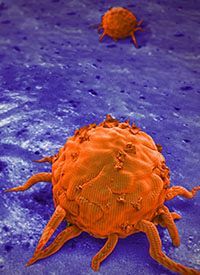Article
Pancreatic Cancer Incidence Rises, Notably Among Younger Women
Author(s):
Incidence of pancreatic cancer incidence rose overall from 2000 to 2018, with a significant increase in women younger than 55 years, especially those aged 15 to 35 years.

Incidence of pancreatic cancer incidence rose overall from 2000 to 2018, according to findings from a research letter published in JAMA. 1 In particular, investigators at Cedars-Sinai Cancer observed a significant increase in women younger than 55 years, especially those aged 15 to 35 years.
The results showed a significant increase in the average annual percentage changes of the total pancreatic cancer cases in women (0.78%; 95% CI, 0.68%-0.88%; P <.001) and in men (0.90%; 95% CI, 0.82%-0.99%; P <.001). There was no statistically significant difference between sexes (0.12%; 95% CI, 0%-0.25%; P = .06).
The incidence rates were considerably lower among the 32,369 patients younger than 55 years (11.4% of cases; 43% women). However, the data showed a greater relative increase in incidence among women younger than 55 years (1.93%; 95% CI, 1.57%-2.28%; P < .001) vs men in the same age category (0.77%; 95% CI, 0.50%-1.05%; P < .001), indicating nonequal trends (P = .002).
“These findings are important because this is the first time, using the most current data, that we are reporting that pancreatic cancer rates are increasing dramatically in women who are younger than 55,” lead study author and assistant professor of medicine at Cedars Sinai, Srinivas Gaddam, MD, said in a press release.2 “The findings are most dramatic in women less than 35 years old.”
Pancreatic cancer is the fourth leading cause of cancer-related mortality with a 5-year survival rate of approximately 10%. Noncomparative data from 2013 showed a rising increasing incidence of pancreatic cancer in older White women and men and in younger non-Hispanic White women. However, limited data exist regarding current patterns in pancreatic cancer incidence. As such, Gaddam and colleagues conducted an age- and sex-specific time trend analysis of pancreatic cancer incidence rates.
Pancreatic cancer incidence rates per 100,000 population were collected from 2000 to 2018 from the Surveillance Epidemiology and End Results database. A total of 283,817 diagnoses were recorded in the database, 50% which occurred in women. These data were age-adjusted to the 2000 United States population and adjusted for the reporting delay.
Patients younger than 55 years were termed younger adults and those aged 55 years or older were termed older adults. Investigators also conducted post-hoc analysis for patients aged the 15 to 34 years and for those aged 35 to 54 years.
Further results demonstrated that, among patients aged 55 years or older (n = 251,360; 51% women), the average annual percentage changes increased among women (0.62%; 95% CI, 0.51%-0.74%; P <.001) but more so in men (0.92%; 95% CI, 0.82%-1.01%; P < .001), reflecting nonequal trends (P < .001).
To better understand the pattern reversal, the cohort of patients under the age of 55 years was split into 2 subgroups: 35 to 54 years (n = 30,831; 10.9%) and 15 to 34 years (n = 1538; 0.54%).
Women aged 35 to 54 years had a greater relative increase in incidence rates (n = 13,139; average annual percentage change, 1.56%; 95% CI, 1.24%-1.87%; P <.001) compared with men (n = 17,692; average annual percentage change, 0.65%; 95% CI, 0.38%-0.91%; P <.001). Investigators also reported nonequal trends (P = .004).
Women aged 15 to 34 years also had a greater relative increase (n = 896; average annual percentage change, 7.68%; 95% CI, 6.21%-9.18%; P <.001) vs men (n = 642; average annual percentage change, 4.20%; 95% CI, 2.54%-5.90%; P <.001), again demonstrating nonequal trends (P = .01).
“We don’t know the causes yet. Women with abdominal pain should not run to their primary care physicians and ask for a CT scan,” Gaddam said. “The incidence of this cancer is still very low in young people. We’ve identified this risk because we want to know what’s causing the significant upward trend. Also, are we catching it early? Will it continue for decades to come? Our goal is to find the answers to those and other questions.
“Future studies should validate these findings in other large population-based cohorts,” Gaddam concluded.
References
- Gaddam S, Abboud Y, Oh J, et al. Incidence of pancreatic cancer by age and sex in the US, 2000-2018. JAMA. Published online October 24, 2021. Accessed October 29, 2021. doi:10.1001/jama.2021.18859
- Study: incidence of pancreatic cancer rising in younger women. News release. Cedars Sinai. October 25, 2021. Accessed October 29, 2021. https://ceda.rs/3pPL9M0









